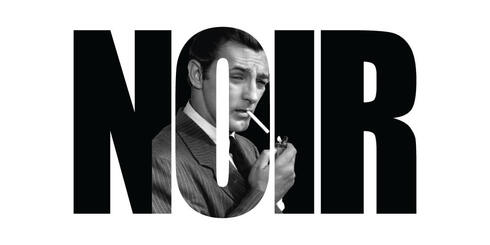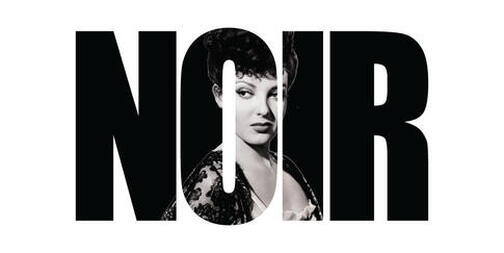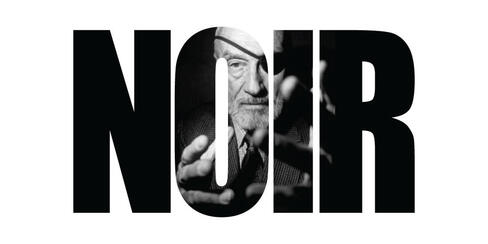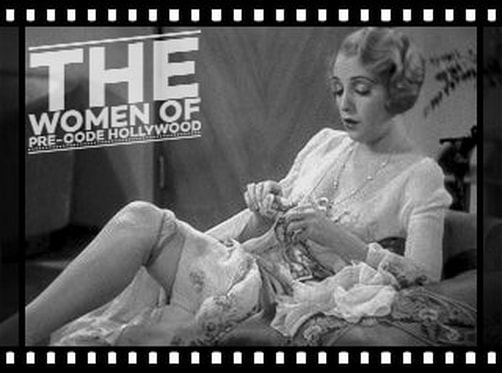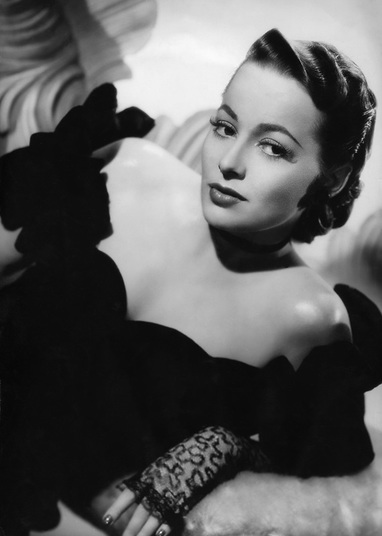
Olivia de Havilland
Active - 1935 - 1989 | Born - Jul 1, 1916 in Tokyo, Japan | Genres - Drama, Romance, Comedy, Historical Film | Height: 5' 4"
Olivia Mary de Havilland was born July 1, 1916, in Tokyo, Japan, to British parents Lilian Augusta (Ruse), a former actress, and Walter Augustus de Havilland, an English professor and patent attorney. Her sister, Joan, later to become famous as Joan Fontaine, was born the following year. Her surname comes from her paternal grandfather, whose family was from Guernsey in the Channel Islands. Her parents divorced when Olivia was just three years old, and she moved with her mother and sister to Saratoga, California.
After graduating from high school, where she fell prey to the acting bug, Olivia enrolled in Mills College in Oakland. It was while she was at Mills that she participated in the school play "A Midsummer Night's Dream" and was spotted by Max Reinhardt. She so impressed Reinhardt that he picked her up for both his stage version and, later, the Warner Bros. film version in 1935. She again was so impressive that Warner executives signed her to a seven-year contract. No sooner had the ink dried on the contract than Olivia appeared in three more films: The Irish in Us (1935), Alibi Ike (1935) and Captain Blood (1935), the latter with the man with whom her career would be most closely identified, heartthrob Errol Flynn.
He and Olivia starred together in eight films during their careers. In 1939 Warner Bros. loaned her to David O. Selznick for the classic Gone with the Wind (1939). Playing the sweet Melanie Hamilton, Olivia received her first nomination for an Academy Award for Best Supporting Actress, only to lose out to one of her co-stars in the film, Hattie McDaniel. After GWTW, Olivia returned to Warner Bros. and continued to churn out films. In 1941 she played Emmy Brown in Hold Back the Dawn (1941), which resulted in her second Oscar nomination, this time for Best Actress. Again she lost, this time to her sister Joan for her role in Suspicion (1941). After that strong showing, Olivia now demanded better, more substantial roles than the "sweet young thing" slot into which Warners had been fitting her.
The studio responded by placing her on a six-month suspension, all of the studios at the time operating under the policy that players were nothing more than property to do with as they saw fit. As if that weren't bad enough, when her contract with Warners was up, she was told that she would have to make up the time lost because of the suspension. Irate, she sued the studio, and for the length of the court battle she didn't appear in a single film. The result, however, was worth it. In a landmark decision, the court said not only that Olivia did not have to make up the time, but that all performers were to be limited to a seven-year contract that would include any suspensions handed down. This became known as the "de Havilland decision"; no longer could studios treat their performers as mere cattle.
Returning to screen in 1946, Olivia made up for lost time by appearing in four films, one of which finally won her the Oscar that had so long eluded her. It was To Each His Own (1946), in which she played Josephine Norris to the delight of critics and audiences alike. Olivia was the strongest performer in Hollywood for the balance of the 1940s. In 1948 she turned in another strong showing in The Snake Pit (1948) as Virginia Cunningham, a woman suffering a mental breakdown. The end result was another Oscar nomination for Best Actress, but she lost to Jane Wyman in Johnny Belinda (1948).
As in the two previous years, she made only one film in 1949, but she again won a nomination and the Academy Award for Best Actress for The Heiress (1949). After a three-year hiatus, Olivia returned to star in My Cousin Rachel (1952). From that point on, she made few appearances on the screen but was seen on Broadway and in some television shows. Her last screen appearance was in The Fifth Musketeer (1979), and her last career appearance was in the TV movie The Woman He Loved (1988).
During the hoopla surrounding the 50th anniversary of GWTW in 1989, she graciously declined requests for all interviews as the only surviving one of the four main stars. Today she enjoys a quiet retirement in Paris, France.
Available Films:
Active - 1935 - 1989 | Born - Jul 1, 1916 in Tokyo, Japan | Genres - Drama, Romance, Comedy, Historical Film | Height: 5' 4"
Olivia Mary de Havilland was born July 1, 1916, in Tokyo, Japan, to British parents Lilian Augusta (Ruse), a former actress, and Walter Augustus de Havilland, an English professor and patent attorney. Her sister, Joan, later to become famous as Joan Fontaine, was born the following year. Her surname comes from her paternal grandfather, whose family was from Guernsey in the Channel Islands. Her parents divorced when Olivia was just three years old, and she moved with her mother and sister to Saratoga, California.
After graduating from high school, where she fell prey to the acting bug, Olivia enrolled in Mills College in Oakland. It was while she was at Mills that she participated in the school play "A Midsummer Night's Dream" and was spotted by Max Reinhardt. She so impressed Reinhardt that he picked her up for both his stage version and, later, the Warner Bros. film version in 1935. She again was so impressive that Warner executives signed her to a seven-year contract. No sooner had the ink dried on the contract than Olivia appeared in three more films: The Irish in Us (1935), Alibi Ike (1935) and Captain Blood (1935), the latter with the man with whom her career would be most closely identified, heartthrob Errol Flynn.
He and Olivia starred together in eight films during their careers. In 1939 Warner Bros. loaned her to David O. Selznick for the classic Gone with the Wind (1939). Playing the sweet Melanie Hamilton, Olivia received her first nomination for an Academy Award for Best Supporting Actress, only to lose out to one of her co-stars in the film, Hattie McDaniel. After GWTW, Olivia returned to Warner Bros. and continued to churn out films. In 1941 she played Emmy Brown in Hold Back the Dawn (1941), which resulted in her second Oscar nomination, this time for Best Actress. Again she lost, this time to her sister Joan for her role in Suspicion (1941). After that strong showing, Olivia now demanded better, more substantial roles than the "sweet young thing" slot into which Warners had been fitting her.
The studio responded by placing her on a six-month suspension, all of the studios at the time operating under the policy that players were nothing more than property to do with as they saw fit. As if that weren't bad enough, when her contract with Warners was up, she was told that she would have to make up the time lost because of the suspension. Irate, she sued the studio, and for the length of the court battle she didn't appear in a single film. The result, however, was worth it. In a landmark decision, the court said not only that Olivia did not have to make up the time, but that all performers were to be limited to a seven-year contract that would include any suspensions handed down. This became known as the "de Havilland decision"; no longer could studios treat their performers as mere cattle.
Returning to screen in 1946, Olivia made up for lost time by appearing in four films, one of which finally won her the Oscar that had so long eluded her. It was To Each His Own (1946), in which she played Josephine Norris to the delight of critics and audiences alike. Olivia was the strongest performer in Hollywood for the balance of the 1940s. In 1948 she turned in another strong showing in The Snake Pit (1948) as Virginia Cunningham, a woman suffering a mental breakdown. The end result was another Oscar nomination for Best Actress, but she lost to Jane Wyman in Johnny Belinda (1948).
As in the two previous years, she made only one film in 1949, but she again won a nomination and the Academy Award for Best Actress for The Heiress (1949). After a three-year hiatus, Olivia returned to star in My Cousin Rachel (1952). From that point on, she made few appearances on the screen but was seen on Broadway and in some television shows. Her last screen appearance was in The Fifth Musketeer (1979), and her last career appearance was in the TV movie The Woman He Loved (1988).
During the hoopla surrounding the 50th anniversary of GWTW in 1989, she graciously declined requests for all interviews as the only surviving one of the four main stars. Today she enjoys a quiet retirement in Paris, France.
Available Films:
Trivia:
Older sister of actress Joan Fontaine.
Daughter of film and stage actress Lilian Fontaine.
Relations between de Havilland and younger sister Joan Fontaine were never all that strong and worsened in 1941, when both were nominated for 'Best Actress' Oscar awards. Their mutual dislike and jealousy escalated into an all-out feud after Fontaine won for Suspicion (1941). Despite the fact that de Havilland went on to win two Academy Awards of her own, they remained permanently estranged.
Justly famous for her court victory against Warner Brothers in the mid 1940s (many others had sued Warners but failed), which stopped Warners from adding suspension periods to actors' contracts and therefore meant more freedom for actors in Hollywood. It became known as the "de Havilland decision".
Turned down the role of Blanche DuBois in A Streetcar Named Desire (1951), reportedly saying that "a lady just doesn't say or do those things on the screen". De Havilland set the record straight in a 2006 interview, saying that she had recently given birth to her son when offered the part and was unable to relate to the material.
She and Errol Flynn acted together in 8 movies: The Adventures of Robin Hood (1938), Captain Blood (1935), The Charge of the Light Brigade (1936), Dodge City (1939), Four's a Crowd (1938), The Private Lives of Elizabeth and Essex (1939), Santa Fe Trail (1940), and They Died with Their Boots On (1941) Both are also featured in a 9th film, Thank Your Lucky Stars (1943), although in separate scenes.
Confessed in later years that she had an intense crush on Errol Flynn during the years of their filming, saying that it was hard to resist his charms.
When she was 9 years old, she made a will in which she stated, "I bequeath all my beauty to my younger sister Joan [Joan Fontaine], since she has none".
Was romantically involved with James Stewart, Howard Hughes, John Huston in the late 1930s.
She accepted two film roles turned down by Ginger Rogers, To Each His Own (1946) and The Snake Pit (1948). Olivia won an Oscar for To Each His Own (1946) and was nominated for The Snake Pit (1948). Rogers later regretted turning down the roles and wrote: "It seemed Olivia knew a good thing when she saw it. Perhaps Olivia should thank me for such poor judgment".
Was offered the role of Mary Hatch Bailey in It's a Wonderful Life (1946) after Jean Arthur turned it down, but she also turned down the part. Donna Reed was cast instead and it went on to be one of her most famous performances.
[on Errol Flynn] "I had a very big crush on Errol Flynn during "Captain Blood." I thought he was absolutely smashing for three solid years, but he never guessed. Then he had one on me but nothing came of it. I'm not going to regret that; it could have ruined my life."
[on Bette Davis] "The great lesson I learned from Bette was her absolute dedication to getting everything just right. She used to spend hours studying the character she was going to play, then hours in make-up ensuring that her physical appearance was right for the part. I have always tried to put the same amount of work into everything I've done."
[on Clark Gable] "Clark Gable was highly professional. He was a bigger star than we can create today. I was just a mini-star when we did "Gone With the Wind." I was afraid to talk to him. People can't understand it now, but we were in awe. Clark Gable didn't open supermarkets."
[on Hush...Hush, Sweet Charlotte (1964)] "I always thought it would be fun if we could work together. Then I was offered the chance to work with her on the film that became Hush...Hush, Sweet Charlotte (1964) when Joan Crawford withdrew. I knew Bette wanted badly to work, and Jane [What Ever Happened to Baby Jane? (1962)] had been such a success that Bette was quite anxious. They had to find the replacement, and Bette wanted me."
[dedication to Mickey Rooney upon his death, 2014] "Mickey, Mickey, Mickey. They say you have died but I find this so hard to believe, for you are so live in my memory. There you are in the big room of the Chamber of Commerce Building on Sunset Boulevard in the summer of 1934, a little boy passing easily as a nine year-old when you are really thirteen. You hand me your work copy of 'A Midsummer Night's Dream', climb onto the banquette beside me, place your head upon my lap and ask me to awaken you nine lines before your cue...What a memory you have left with me to keep."
Older sister of actress Joan Fontaine.
Daughter of film and stage actress Lilian Fontaine.
Relations between de Havilland and younger sister Joan Fontaine were never all that strong and worsened in 1941, when both were nominated for 'Best Actress' Oscar awards. Their mutual dislike and jealousy escalated into an all-out feud after Fontaine won for Suspicion (1941). Despite the fact that de Havilland went on to win two Academy Awards of her own, they remained permanently estranged.
Justly famous for her court victory against Warner Brothers in the mid 1940s (many others had sued Warners but failed), which stopped Warners from adding suspension periods to actors' contracts and therefore meant more freedom for actors in Hollywood. It became known as the "de Havilland decision".
Turned down the role of Blanche DuBois in A Streetcar Named Desire (1951), reportedly saying that "a lady just doesn't say or do those things on the screen". De Havilland set the record straight in a 2006 interview, saying that she had recently given birth to her son when offered the part and was unable to relate to the material.
She and Errol Flynn acted together in 8 movies: The Adventures of Robin Hood (1938), Captain Blood (1935), The Charge of the Light Brigade (1936), Dodge City (1939), Four's a Crowd (1938), The Private Lives of Elizabeth and Essex (1939), Santa Fe Trail (1940), and They Died with Their Boots On (1941) Both are also featured in a 9th film, Thank Your Lucky Stars (1943), although in separate scenes.
Confessed in later years that she had an intense crush on Errol Flynn during the years of their filming, saying that it was hard to resist his charms.
When she was 9 years old, she made a will in which she stated, "I bequeath all my beauty to my younger sister Joan [Joan Fontaine], since she has none".
Was romantically involved with James Stewart, Howard Hughes, John Huston in the late 1930s.
She accepted two film roles turned down by Ginger Rogers, To Each His Own (1946) and The Snake Pit (1948). Olivia won an Oscar for To Each His Own (1946) and was nominated for The Snake Pit (1948). Rogers later regretted turning down the roles and wrote: "It seemed Olivia knew a good thing when she saw it. Perhaps Olivia should thank me for such poor judgment".
Was offered the role of Mary Hatch Bailey in It's a Wonderful Life (1946) after Jean Arthur turned it down, but she also turned down the part. Donna Reed was cast instead and it went on to be one of her most famous performances.
[on Errol Flynn] "I had a very big crush on Errol Flynn during "Captain Blood." I thought he was absolutely smashing for three solid years, but he never guessed. Then he had one on me but nothing came of it. I'm not going to regret that; it could have ruined my life."
[on Bette Davis] "The great lesson I learned from Bette was her absolute dedication to getting everything just right. She used to spend hours studying the character she was going to play, then hours in make-up ensuring that her physical appearance was right for the part. I have always tried to put the same amount of work into everything I've done."
[on Clark Gable] "Clark Gable was highly professional. He was a bigger star than we can create today. I was just a mini-star when we did "Gone With the Wind." I was afraid to talk to him. People can't understand it now, but we were in awe. Clark Gable didn't open supermarkets."
[on Hush...Hush, Sweet Charlotte (1964)] "I always thought it would be fun if we could work together. Then I was offered the chance to work with her on the film that became Hush...Hush, Sweet Charlotte (1964) when Joan Crawford withdrew. I knew Bette wanted badly to work, and Jane [What Ever Happened to Baby Jane? (1962)] had been such a success that Bette was quite anxious. They had to find the replacement, and Bette wanted me."
[dedication to Mickey Rooney upon his death, 2014] "Mickey, Mickey, Mickey. They say you have died but I find this so hard to believe, for you are so live in my memory. There you are in the big room of the Chamber of Commerce Building on Sunset Boulevard in the summer of 1934, a little boy passing easily as a nine year-old when you are really thirteen. You hand me your work copy of 'A Midsummer Night's Dream', climb onto the banquette beside me, place your head upon my lap and ask me to awaken you nine lines before your cue...What a memory you have left with me to keep."

